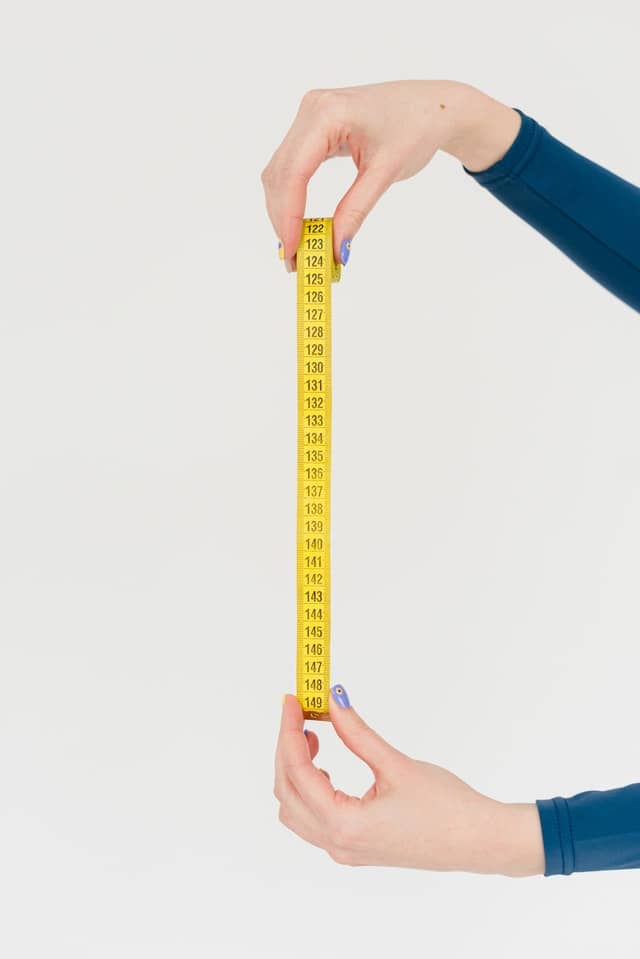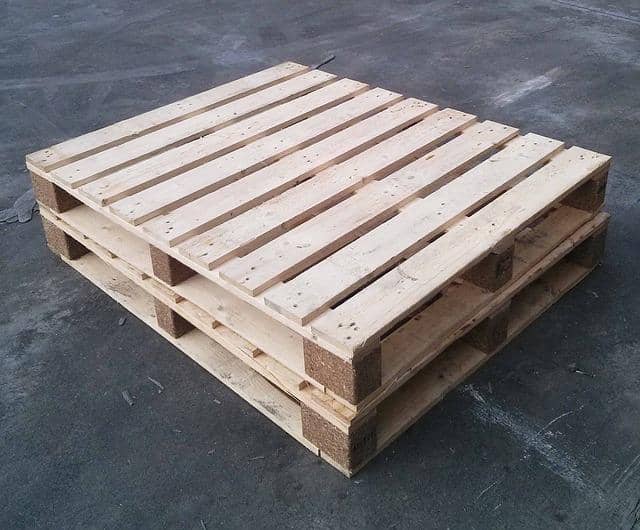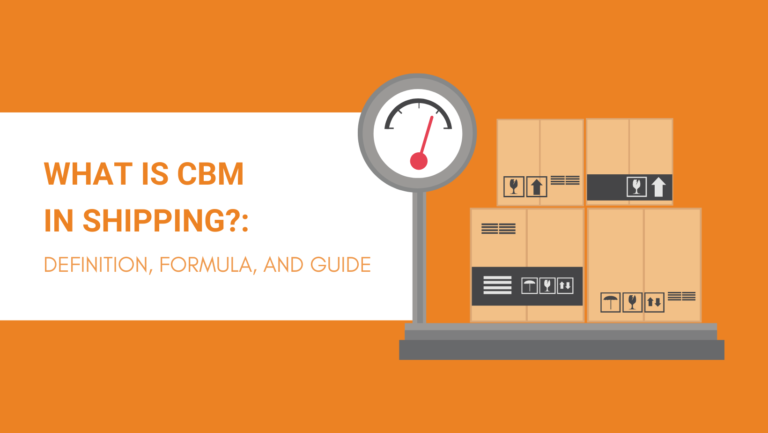Knowing the volume of your shipment is crucial when you buy or sell across borders. It has a major role in deciding the delivered cost of your products and setting their retail prices accordingly to finalize your net profit margins.
You may have already heard of the term but what is CBM in shipping and how can it affect your shipping costs?
This article will guide you through everything about calculating the CBM of your packages and how you can use it to avoid extra shipping charges.
Let’s start.
What Is CBM?
CBM is a logistics abbreviation that stands for cubic meter. Yes, it is the same unit of volume that we studied in our schools. A CBM refers to the volume of your shipment in cubic meters.

It can also be written in its short form of m3. While you are free to calculate the volume in your preferred units including millimeter cube (mm3) and centimeter cube (cm3), the shipping companies generally prefer calculating the volume in CBM.
In most cases, if you share the volume in other units, they usually convert it to CBM as a standard.
Simply put, CBM is the unit of measurement that shipping companies use to calculate the volume of the package to be transported or shipped.
How to Calculate CBM?
Calculating the CBM simply means calculating the volume of the package in cubic meters. As we know, the formula to calculate the volume is (length x width x height).
So, you just have to measure the length, width, and height of a package in meters, and you can calculate the CBM by multiplying them by each other.
Here’s the formula for calculating CBM:
CBM (single package) = Length x Width x Height (in meters)
Let’s say you want to ship a package with the following measurements.
Length = 4 meters
Width = 2 meters
Height = 3 meters
CBM = 4 x 2 x 3 = 24 m3
If you have many shipment packages, you can calculate the total CBM of the whole shipment with the following methods.
How to Calculate CBM for Multiple Identical Packages?
For identical packages, the CBM can be calculated by multiplying the total number of items with the volume in meters (length x width x height) of a single package.
Total CBM (multiple identical packages) = Number of packages x (Volume of a single package)
For example, if you have 50 packages of the above-mentioned CBM, you can calculate the CBM for the whole shipment with the following formula.
Total CBM = 50 x 24 = 1200 m3

Now, let’s learn how to calculate the CBM for packages with different shapes.
Cube-Shaped Package
A cube shape is considered a simple and standard shape in shipping terms. The examples and formulas we discussed above are meant for the cube-shaped packages.
Irregular-Shaped Package
If your package is not in any specific shape, the shipping companies measure the maximum length, width, and height.
So, the formula for calculating the CBM of an irregular-shaped package is as follows.
CBM (Irregular-shaped) = Max Length x Max Width x Max Height
Let’s suppose your package has a 2-meter length from one side and a 3-meter length from the other side, the shipping company will consider 3 meters as the length of your package.
The same principle goes for the width and height as well.
So, if the package has unidentical widths (4-meter and 5-meter) and heights (6-meter and 7-meter) on each side, the shipping company will select 5 meters (maximum) as the width and 7 meters (maximum) as the height to calculate its CBM.
The CBM for this example is calculated below.
CBM (Irregular-shaped) = 3 x 5 x 7 = 105 m3
Suppose you have multiple packages of irregular shapes. In that case, the shipping company will have to calculate the CBM for each package individually and add them up to calculate the total CBM for the whole shipment.
You may think it is unfair to only consider the higher value from the dimensions because your packages are occupying less space on the sides with lower measurements.
But it is their compulsion to do so. Your package may not occupy the space from lower dimensions in the container but the left-out space is generally of no use for a shipping company.
They mostly cannot place any other object in the unoccupied spaces left by the lower dimensions of your packages.
So, a shipping company will still charge you for that useless space.
Cylindrical Package
The formula for calculating the volume or CBM of the cylindrical-shaped package is different.
Again, you have to recall the formula you learned in your school to calculate the volume of a cylinder. It is mentioned below.
The formula for the volume of a cylindrical shape = πr2h
If you have to ship products like a rolled fabric or pipe, the following formula should be applied.

CBM (Cylindrical package) = π (pi) x r2 (square of radius) x h (height of the package)
So, if a package has a radius of 2 meters and a height of 3 meters, the CBM will be as follows.
CBM = 3.14 x (2)2 x 3 = 37.71 m3
The shipping company may round it off to 38 m3.
What Is the Actual Weight of a Package?
The actual weight or the gross weight of the package is what the weighing machine shows when we put the package on it. This is the simplest way of finding the weight of the package.
The standard unit for measuring the actual weight of the package is kg or lb.
How to Calculate Volumetric Weight from CBM?
The dimensional or volumetric weight refers to the weight of the package that applies due to its dimensions or volume. It is different from the actual weight of the package.
Suppose you have a big package that only contains cotton which occupies a substantial space.
If a shipping company charges you according to the actual weight of this package, the charges may be very low but a few packages like this will fill up the whole container resulting in a loss to the shipping company.
Consequently, the shipping company will calculate the volumetric weight of the package and charge you accordingly.

They will calculate the volume in cubic meters (CBM) and then convert it into kgs by using the dim factors for different modes of transportation.
What Are the DIM Factors in Converting CBM to Kilograms?
The DIM Factor is short for the dimensional factor used to calculate or convert the dimensional weight of the package from CBM to Kg.
The DIM Factors vary for different shipping modes. The standard ones are mentioned below.
- Air Freight: 1 CBM = 167 Kg
- Road Freight: 1 CBM = 333 Kg
- Sea Freight: 1 CBM = 1000 Kg
So, if the volume of the package is 1.5 CBM, a shipping company will consider its volumetric weight to be 250.5 kg for air freight, 499.5 kg for road freight, and 1500 kg for ocean or sea freight.
The dim factors are necessary to decide the chargeable weight between the actual weight and the volumetric weight of the package.
How to Calculate Chargeable Weight from CBM?
The chargeable weight is the higher weight between the actual and volumetric weights.

The whole point of calculating the volumetric weight of the package is to compare it with the actual weight so that they can charge for the weight that is higher in value.
Calculating Chargeable Weight from CBM for Air Freight
Let’s check the chargeable weight for air freight with the following details of the package.
Actual weight = 800 kg
Volume = 1.5 CBM
Volumetric Weight = 1.5 x 167 = 250. 5 kg
So, as the actual weight is higher than the volumetric weight, the chargeable weight, in this case, will be 800 kg.
Calculating Chargeable Weight from CBM for Road Freight
Continuing from the previous example, the volumetric weight, in this case, will be as follows.
Volumetric weight = 1.5 x 333 = 499.5 kg
The actual weight is higher than the volumetric weight in this case too. So, the chargeable weight will be 800 kg.
Calculating Chargeable Weight from CBM for Sea Freight
By applying the DIM Factor of 1000 in the case of sea freight, the volumetric weight of the same package will be as follows.
Volumetric Weight = 1.5 x 1000 = 1500 kg
In this case, the volumetric weight is higher than the actual weight. So, the chargeable weight will be 1500 kg instead of 800 kg.
How Many CBMs Are in a Container?
The shipping containers are usually transported via sea and road. The CBMs of the packages are also important for calculating how many packages will fit in a container.

There are two standard sizes (20 ft and 40 ft) of the containers used internationally. The dimensions for both containers only differ in length. The width and height of both containers are the same.
CBMs in 20′ Container
The dimensions of a 20′ container are mentioned below.
Length = 5.89 m
Width = 2.34 m
Height = 2.38 m
CBM (20′ container) = 5.89 x 2.34 x 2.38 = 32.8 m3
CBMs in 40′ Container
Following are the dimensions of a 40′ container.
Length = 12.00 m
Width = 2.34 m
Height = 2.38 m
CBM (40′ container) = 12 x 2.34 x 2.38 = 66.8 m3
So, the maximum capacities of 20′ and 40′ containers are 32.8 CBM and 66.8 CBM respectively.
As a container is loaded with packages of different sizes and shapes, it is impossible to fully use the space. Shipping companies, therefore, have to fill up a container as much as they can.
Usually, a container can be filled up to 80%.
So, a 20′ container can be filled up with a maximum of 26.4 CBM and a 40′ container can be filled up with a maximum of 53.4 CBM.
How Many CBMs Are in a Pallet?
A pallet, generally made of wood, is a hard and strong surface used in containers to protect the goods and keep them intact.
How many CBMs a pallet will hold depends upon the size of the pallet but a standard 48’’ x 40’’ pallet can hold up to 1.26 CBM.

Factors Affecting CBM Rates
In addition to the general factors of transportation mode and shipping service, the rates per CBM will depend on your preference of using LCL (Less than Container Load) or FCL (Full Container Load).
If you have items that can fill up a full container, you should go for the FCL shipment because it will cost you less per item. Otherwise, you can go for LCL.
Further Reading: FCL vs LCL: Choose the Best Option for Your Shipping Needs
FAQs about CBM in Shipping
The following answers to the frequently asked questions will further help you clarify any confusion about CBM in shipping.
What Is CBM vs CFT?
Some shipping companies also use CFT as a standard for calculating the volume of the packages. CFT stands for Cubic Feet. It is very easy to convert CBM to CFT and vice versa.
The formula to convert CBM to CFT is as follows.
1 CBM = 35.31 CFT
How to Calculate CBM in Inches?
If you have calculated the dimensions of a package in inches, you can convert the cubic inches (in3) into CBM (m3) by the following formula.
1 CBM = 61024 cubic inches, or
1 cubic inch = 0.000016 CBM
Let’s calculate the volume of a package with the following details.
Length = 50 in
Width = 45 in
Height = 40 in
Volume = 50 x 45 x 40 = 90,000 cubic inch
Now, you can convert it to get the answer in CBM as below.
90,000 x 0.000016 = 1.44 CBM
How Many Boxes Fit in a 20ft Container?
It depends on the size or dimensions of a box that you want to fit in a 20 ft container. As we discussed, the maximum capacity of a 20′ container is around 26.4 CBM, let’s do the maths to find out how many identical boxes with the following details will fit in a 20ft container.
Box dimensions = 0.45 (L), 0.35 (W), 0.25 (H)
Volume of one box = 0.45 x 0.35 x 0.25 = 0.039 CBM
Maximum capacity of 20ft container = 26.4 CBM
Total number of boxes that can be filled in a 20ft container = 26.4/0.039 = 676 boxes
How Many Boxes Fit in a 40ft Container?
To calculate how many boxes with the volume of 0.039 CBM each will fit in a 40ft container, we just have to divide the maximum CBM capacity of a 40ft container by 0.039.
Total number of boxes that can be filled in a 40ft container = 53.4/0.039 = 1369 boxes.
How Do You Maximize Container Space?
You can maximize the container space by considering the following simple yet useful tips.
- Pack the products using the shortest possible packaging in the first place.
- Place the bigger boxes below and the smaller ones above.
- Stack the boxes upon each other efficiently to utilize the maximum space.
- Make sure you are not using the extra number of pallets.
- If you have loose items in the container, consider placing them in the left-out spaces instead of giving them a separate space.
How Much Space Should Be Left on the Top of a Container?
Just for the safety of your items and to prevent them from striking the top of the container, you should leave the space around an inch or a half.
Summary
CBM is one of the most widely used shipping terminologies. You must have a clear understanding of what is CBM in shipping, how to calculate it, and how to do the conversions.
A slight miscalculation can lead to unexpected freight costs. That’s why you should revert to this article whenever you require assistance with CBM.
Do you want to source and ship products with the cheapest CBM rates from China? Ask for a free quote today and let one of our experts guide you through every step.

